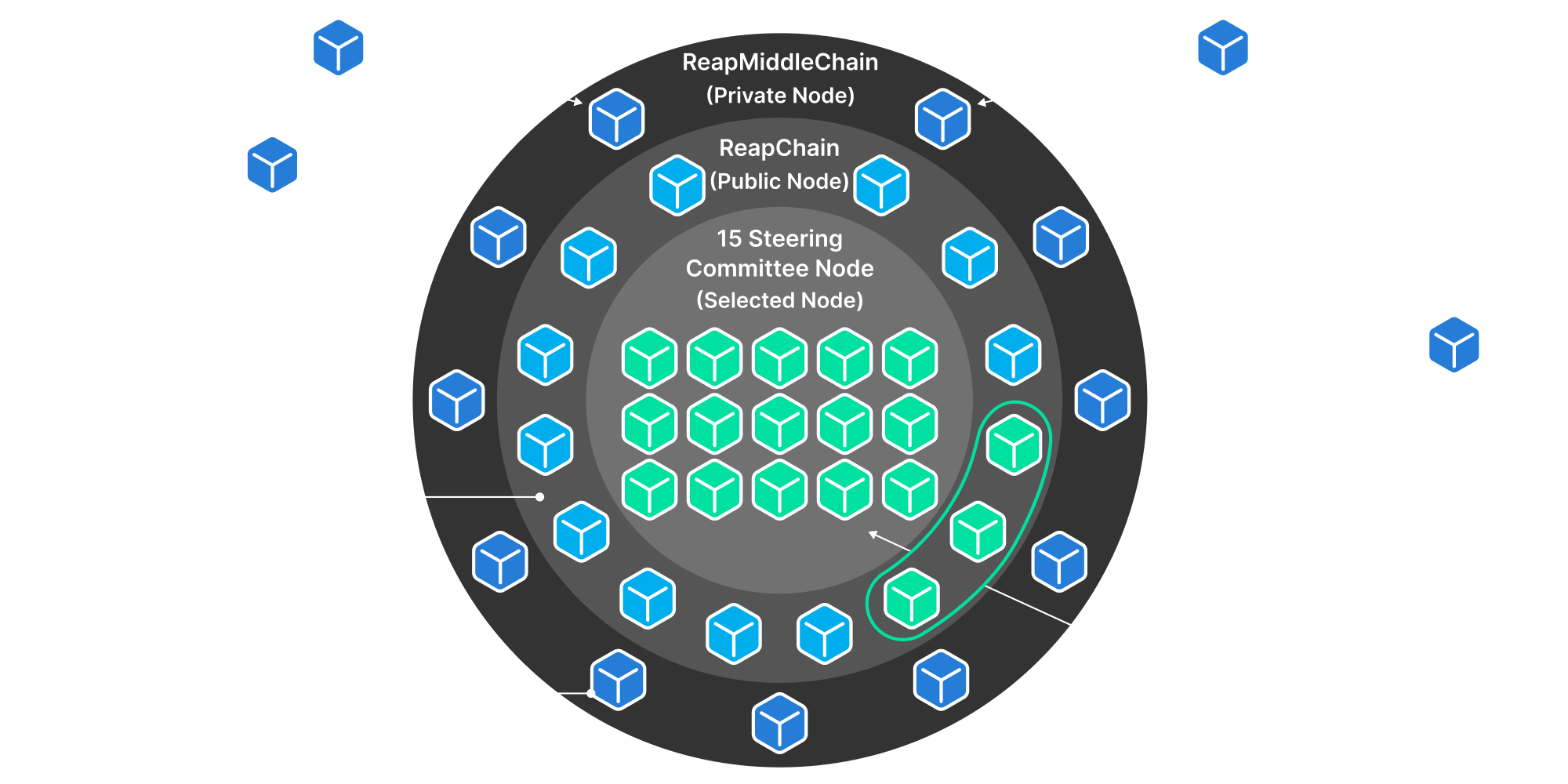SHELL-CORE STURUCTURE
The Shell-Core structure solves the existing Blockchain's trilema, realizing the effective convergence of the Blockchain and the IoT industry.
The new hybrid Blockchain is implemented through the shell-core structure and PoDC consensus algorithm, in which public and private Blockchains are perfectly fused to solve the existing Blockchain's trilemma problem. The Shell-Core Structure has a double-layered chain, and it is designed as a double structure that forms a fake ledger cell block by ReapMiddleChain on the outside, and a definitive block of the real ledger concept inside.
The Shell-Core Structure processes the transaction first with the concept of a fake ledger by placing a high-speed private Blockchain on the
outskirts and the public Blockchain with strong security and decentralization is a new structure of the Blockchain that is placed inside and
post-processed with the concept of a real ledger.
OBJECT PID
Individual IoT devices acquire a private key, which is a unique ID, for each device through the Reap SDK to prevent the forgery of data.
An Individual IoT device obtains a private key, which is a unique ID for Individual devices, through the Reap SDK to prevent hacking or illegal access. When a transaction occurs on an IoT device with the Reap SDK applied, it is only accessible to authorized personnel or devices, and it is possible to check whether data is forged or tampered with. This prevents malfunction or side effects of the management system due to incorrect data transmission.
Reap SDK can support project modules or settings developed based on the existing Micro Controller Unit (MCU). Reap SDK allows you to reuse existing
native SDK code to have interoperability between codes and minimize maintenance and management costs. In addition, a unique ID (private key) is
created for each IoT device and stored in the internal non-volatile memory.
When a data transaction occurs, individual hash devices become small nodes of the ReapChain by receiving and storing the final hash information
generated in the ReapMiddleChain. This allows you to verify device reliability.

